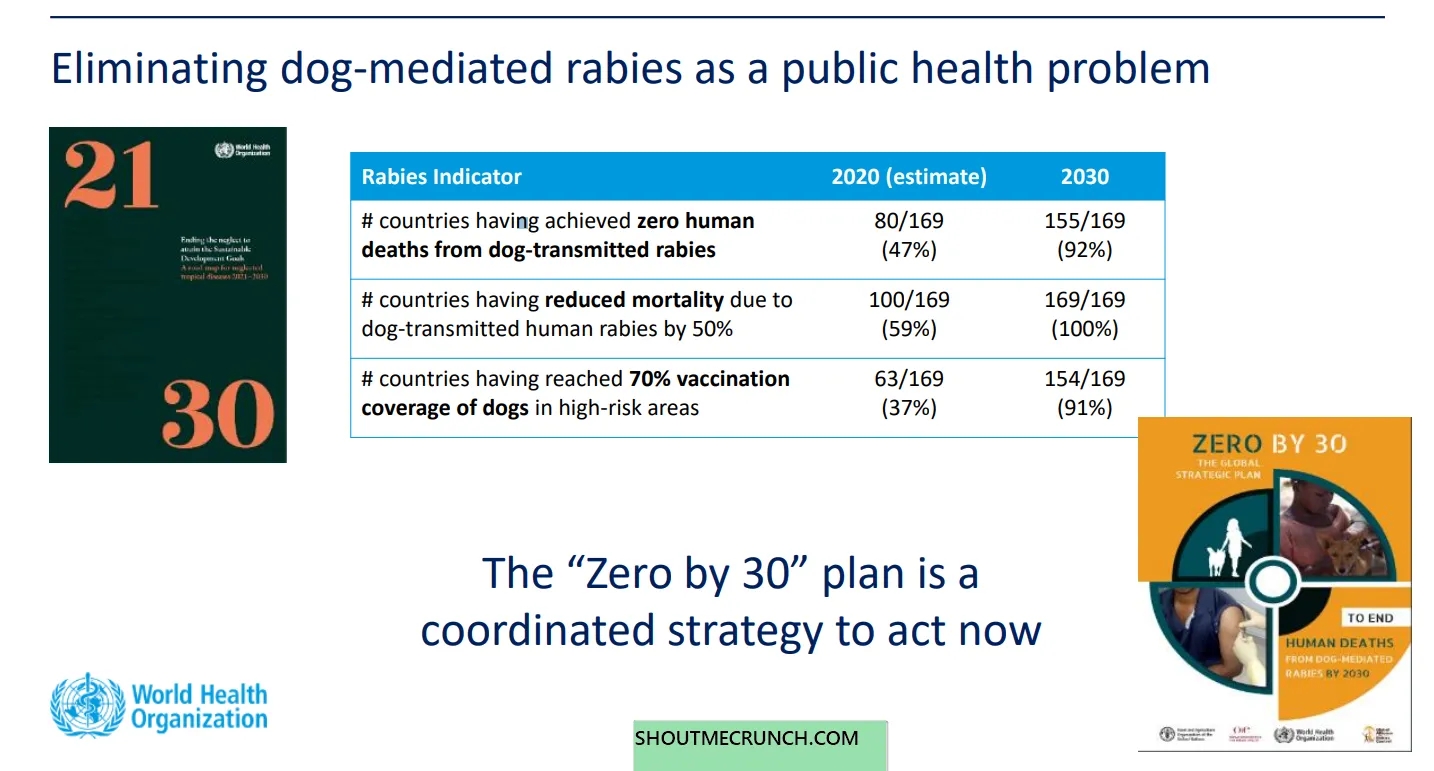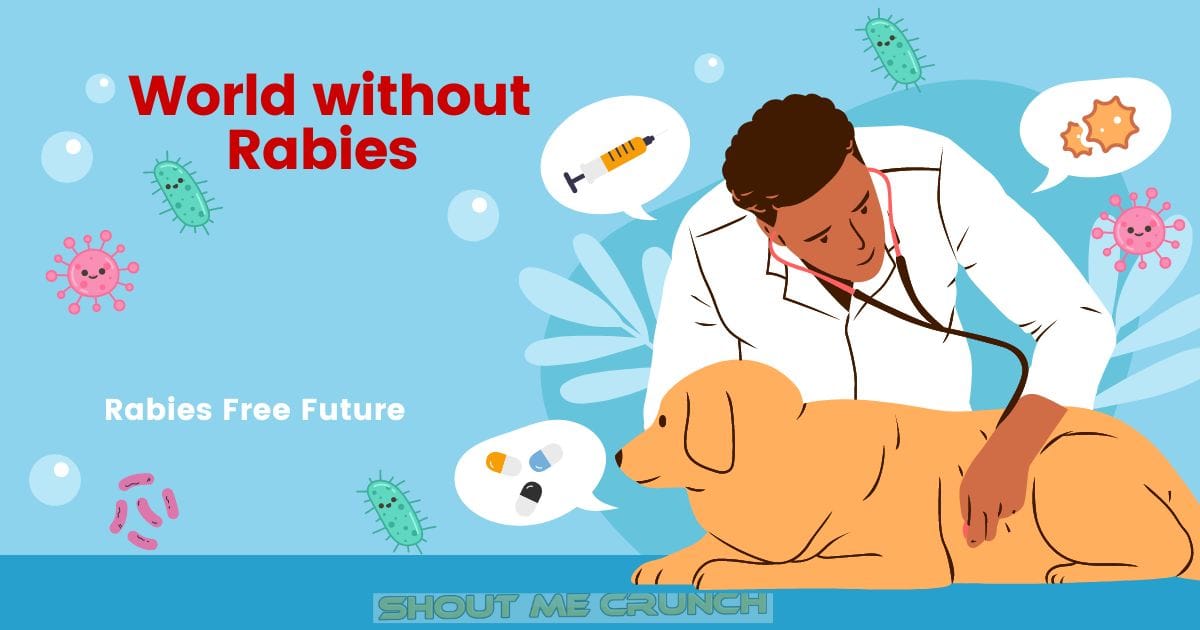Rabies is a fatal disease that has plagued humans for generations. Rabies is deadly but preventable, which is fantastic. It is a significant public health issue, especially in resource-poor and unaware regions.
Fortunately, the ambitious “Zero by 30” policy aims to eliminate dog-mediated rabies by 2030. This ambitious goal by global health organizations is more than a target. It gives hope, shows human resiliency, and shows our will to end rabies.
This essay offers enlightenment—a tour of Bangladesh’s global mission. As we traverse the complex worldwide effort, we’ll explore Bangladesh’s rabies control and elimination tactics, obstacles, and milestones. So, saddle in for an inspiring tale of dedication, innovation, and partnership against one of the world’s oldest and most feared diseases.
Bangladesh’s Comprehensive Strategy Against Rabies
The National Strategy: A Game Changer
Bangladesh has shown commendable initiative by implementing a comprehensive strategy to combat the escalating rabies epidemic. The endeavor, referred to as the National Strategy for the Eradication of Canine-Transmitted Rabies, aims to eradicate human deaths resulting from dog-inflicted rabies by the year 2030.
Accomplishing this goal is contingent on three crucial criteria. It includes widespread dog immunization, making post-bite treatment (PEP) available to humans, and developing robust monitoring systems. This multidimensional plan displays Bangladesh’s persistent commitment to resolving a severe public health risk, emphasizing its dedication to preserving the health of its people and animals.
The Power of Data
The National Strategy for dog-mediated rabies eradication relies on data, usually an arcane concept. It provides a detailed picture of rabies, allowing us to understand better the disease’s prevalence, epidemiology, and dog population dynamics.
The Power of Data in Rabies Control
But why is data held in such high regard? The answer can be found in its utility. Data guides resource allocation, ensuring that resources are directed to the areas where they are most needed. It helps the strategy’s long-term success by gaining political and financial support. Furthermore, data is essential for establishing effective programs and tracking our progress towards the “Zero by 30” goal. Data is a compass that points us toward a rabies-free planet.
Bangladesh’s Extensive Dog Vaccination Program
Milestones and Validation: The Road to Success

Bangladesh is taking on the rabies epidemic with a specific strategy to eliminate human rabies from dog bites by 2030. This includes extensive dog vaccination, easy access to post-bite therapy, and effective monitoring methods. Significant accomplishments include:
- The approval of a dog rabies control program.
- Self-declaration of independence from dog-transmitted rabies.
- Certification of the elimination of human rabies fatalities caused by dogs.
These achievements demonstrate the persistent work of all parties concerned.
Direct and Indirect Costs of Rabies
The Economic Impact of Rabies Elimination
It is essential to think about how eliminating rabies will affect the economy. Rabies has major economic ramifications in addition to being a significant health risk to both humans and animals. These consequences appear as direct expenditures, such as post-exposure prophylactic medical bills and veterinary costs for vaccination animals.
The economic burden of rabies, however, goes beyond these immediate expenses. Indirect expenses, such as lost revenue due to illness or death, and the resources necessary to respond to rabies epidemics also add to the disease’s economic toll.
So, does eradicating rabies make financial sense? Yes, it is a resounding yes! Rabies elimination can result in significant economic benefits by avoiding these costs. Furthermore, healthier communities and cattle can contribute to increased production and economic growth, implying a bright future free of rabies.
Overcoming Barriers in Rabies Immunization Programs
The Role of Community Engagement
Engaging communities in the fight against rabies is vital. Consequently, why is community participation so important? The effectiveness of any public health initiative is significantly contingent upon the active participation and cooperation of the community. Community members assume a critical function in rabies by promoting rabies awareness, ensuring that their canines are vaccinated, and reporting any suspected cases.
Additionally, community involvement helps overcome cultural or logistical barriers that may develop during immunization programs, improving disease control efforts’ efficacy in the long run. Participation in one’s local community is not an extravagance but an absolute must for success.
Understanding Rabies: The Importance of Data
Monitoring and Evaluation: Keeping Track
The National Strategy to reduce dog rabies transmission relies heavily on progress monitoring and keeping an eye on things. It’s as if the plan has hawkish eyes and evaluators gathering vital information about how things are progressing. The World Health Organization, more commonly referred to as the WHO, has developed a set of indispensable rabies indicators to simplify matters. The data presented includes the number of individuals who animals bite, those who received post-exposure prophylaxis (PEP), and the count of rabies-infected humans, canines, and other animal species.

Is this, however, enough to measure the strategy’s true impact? Not quite. Additional indicators are employed to gain a more complete understanding of the program’s effectiveness. These include the geographical distribution of exposures and symptoms, the rate of PEP completion, and laboratory testing competence. These indicators provide a more comprehensive view of the rabies situation and help identify areas for development, ensuring that the plan is regularly refined and optimized for maximum impact.
Conclusion Towards a Rabies-Free Future:
Bangladesh’s National Strategy for Dog-Mediated Rabies Elimination provides hope in the fight against rabies. It demonstrates what can be accomplished when stakeholders band together for a single goal. The success of the policy will not only save lives but will also reduce the socioeconomic burden associated with rabies.
Every Life Counts in Rabies Control
Let us contribute our support to this great endeavor as we approach 2030. Let us raise awareness about rabies prevention and control and help to achieve the “Zero by 30” goal. Ultimately, each life prevented from contracting rabies advances the global effort toward eradicating the disease.
Therefore, are we prepared to work together to eliminate rabies as a global threat? Given our combined capabilities, the appropriate response would be an unequivocal affirmation.


